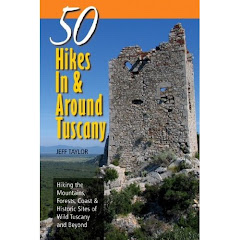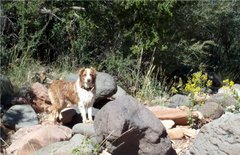Distance: 7.0 miles (11.3 km)
Elevation: 580 - 620 feet (177 - 190 m)
Difficulty: Easy
Time of Year: Anytime
Lake Crescent is one of the jewels of the Olympic Peninsula. Over 600 feet deep and with crystal clear cold waters, the lake shimers blue with cliffs that drop right from the lakeshore in the depths below. The lake is 12 miles long and about 2 miles wide. It was formed about 8,000 years ago, when a massive landslide blocked off Indian Creek and the valley filled with meltwater until it found an alternate drainage via the Lyre River. While most people experience Lake Crescent by driving on Highway 101 west of Port Angeles, the Spruce Railroad Trail offers people the chance to explore its beautiful shoreline in a more leisurely pace on the otherside and see some of the interesting features that makes this area so unique.
 |
| The bridge over Devil's Punchbowl |
The Spruce Railroad Trail follows the old railroad bed that once followed the northern shore of this lake. The railroad was built to send spruce logs to the mills for World War I. However, the railroad was not completed until 1919, at which point the war was already over. The rails have been removed, but the grades make the trail wide and easy to follow in most places and the old railroad tunnels make for some fun exploration.
 |
| The trail on the old railroad grade |
To access the Spruce Railroad Trail, take East Beach Road to the right off of Highway 101 about 25 minutes west of Port Angeles. Follow East Beach Road for 3 miles until you see the sign for "Spruce Railroad Trail" to the left. You will follow this road over the Lyre River and to the parking lot at the end.
 |
| Stonecrops clinging to the rocks |
The trail will first start out through a forest of second growth Douglas fir and big-leaf maples for about 1/2 mile until it arrives along the edge of the lake. The first significant thing you will see is the spectacular "Devil's Punchbowl". This little exclosed "bay" is crossed by an arch bridge and the water is dozens of feet deep as the cliffs drop all around, making for a clear blue hole. This is a great place if you wish to go swimming. But, be warned the water temperature hovers around 45 degrees even in summer. Typically there is a thermoclime of a few inches, where the top layer is near 70 degrees and its freezing underneath. So, you may jump in and feel warm and then you realize your feet are suddenly numb!
 |
| A canoe parked at Devil's Punchbowl |
The trail will then follow the shoreline, alternating between right along the rocky edges and up the slope a bit in forested patches. Along the rocky cliffs you will succulant stonecrops, indian paintbrush, and ferns clinging to the rocky crevasses. Another plant to watch out for in the exposed rocky talus is poison oak. Poison oak is pretty uncommon in Western Washington, but the south-facing slopes of Lake Crescent is one of the few places I have seen it. It is a reddish color in spring and fall, green in summer. Remember the old saying "If leaves of three - leave it be".
 |
| Poison oak |
The trail will continue leisurely with views across to Barnes Point on the opposite side of the lake. Barnes Point contains Lake Crescent Lodge and is the primary spot for visitors to Lake Crescent on Highway 101 because the trail to Marymere Falls leaves from there. That peninsula sticking out into the lake formed when a massive landslide came down and piled debris into the lake. You can see the drainage where the landslide came down and formed Barnes Point clearly from this side of the lake.
 |
| Watch your step for banana slugs on the trail |
The trail continues along steep rocky slopes, old landslide debris, in forested patches full of orchids, trillium, and ferns, and along the shores of the lake. Despite the highway across the lake, the trail is quiet with the only sounds being of towhee's singing in the trees, Douglas squirrels chirpping in disappoval of your arrival, and perhaps the sounds of oars of canoes on the lake.
 |
| The small hill in the middle is part of the the landslide that blocked Indian Creek and formed the dam that created Lake Crescent |
The last 3/4 of a mile of the trail is completely in the woods until you arrive at the other trailhead at the end of the Camp David Jr. Road. This road leads to Fairholme Campground and Highway 101 on the western edge of the lake. If you wish to access the trail from the west (i.e. if you were camping at Fairholme), then you simply do the trail in reverse.
 |
| The azure waters of the lake from the trail |
From here, you simply turn around and return the way you came. Going the otherway allows you a chance to look carefully for the little plants and animals you may have missed on the way out. While this trail can be busy on weekends, due to its low elevation it is available year round and if you go on a weekday in winter, you will have it all to yourself. The nice thing about its southerly exposure is that it gets a lot of sun, which is especially nice in those dark winter days.
 |
| The Douglas squirrels are never afraid to let you know what they think of your presence |


















